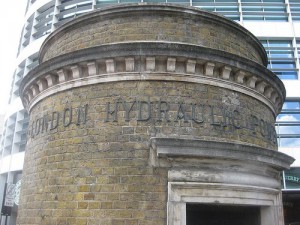Falling Down the Thames Blog 34, 5th November 2014
Over, Under, Over
Not content to paddle the entire length of the River Thames, from its source near the village of Kemble, through the Thames Estuary, and along the north and east coasts of Kent, Krista and I feel the need to travel under the river as well.
Luckily we will not need to add a submarine to our arsenal of watercraft – there are plenty of tunnels under the river.
But driving through one of the road tunnels between North Greenwich and Blackwall doesn’t seem like enough to me. Nor does hopping on one of the Underground systems’ Jubilee Line trains for the trip through a dark tunnel between Westminster and Waterloo. Our Falling Down the Thames adventure is about active, self-propelled travel. I want to walk under the River Thames.
Krista and I have narrowed our options to three:
1. The appropriately named Thames Tunnel was the first ever underwater tunnel. Built under the direction of Marc Isambard Brunel, construction required nearly twenty years. Opened as a pedestrian tunnel in 1843, it is now serves as a rail tunnel between Wapping and Rotherhithe. The Brunel Museum provides all sorts of opportunities for adventurers to go down into the ground, and to travel by train through the tunnel, but I suspect that Krista and I would have difficulties convincing whoever is responsible for the tunnel to let us walk through it. It is probably worth our time to ask.
2. My attention was first drawn to the Tower Subway when I read the English translation of Edmondo De Amicis’s 1873 book Memories of London. The tunnel in central London was constructed in 1870 to house a cable-drawn carriage to take passengers from one side of the river to the other. The company responsible quickly went bankrupt, and the tunnel was given over to pedestrians who paid half-a-penny to use it. De Amicis described the tunnel as being “lit by a long row of lamps which cast a dim light, like the lamps you find on tombs.” He wrote that there is something mysterious about the tunnel, “while not exactly frightening, induced a vague sense of anxiety.”
The Tower Bridge was built in 1894, rendering a nearby pedestrian tunnel rather pointless. In 1898 the tunnel was sold to the London Hydraulics Power Company who put water pipes through it. I believe that those pipes are still there, as are a system of fibre-optic cables. Whether the tunnel is accessible to a pair of intrepid river paddlers, I do not know.
3. The Greenwich Foot Tunnel was completed in 1902. One hundred and twelve years later it still allows pedestrians to cross under the River Thames between the Isle of Dogs on the north bank and Greenwich on the south bank. Members of a newly formed group, the Friends of Greenwich and Woolwich Foot Tunnels, dedicate themselves to the responsible and safe use and enjoyment of these tunnels, and work to ensure their maintenance and appearance. The Greenwich Foot Tunnel is about three metres in diameter and 380 metres in length, and was constructed out of cast iron.
If you have experience with any of these tunnels, Krista and I would love to hear from you.
- Glen
Photo credits: Thames Tunnel – www.ikbrunel.org.uk/thames-tunnel; Tower Subway - www.tiredoflondontiredoflife.com; Greenwich Foot Tunnel – deptfordvisions.com



